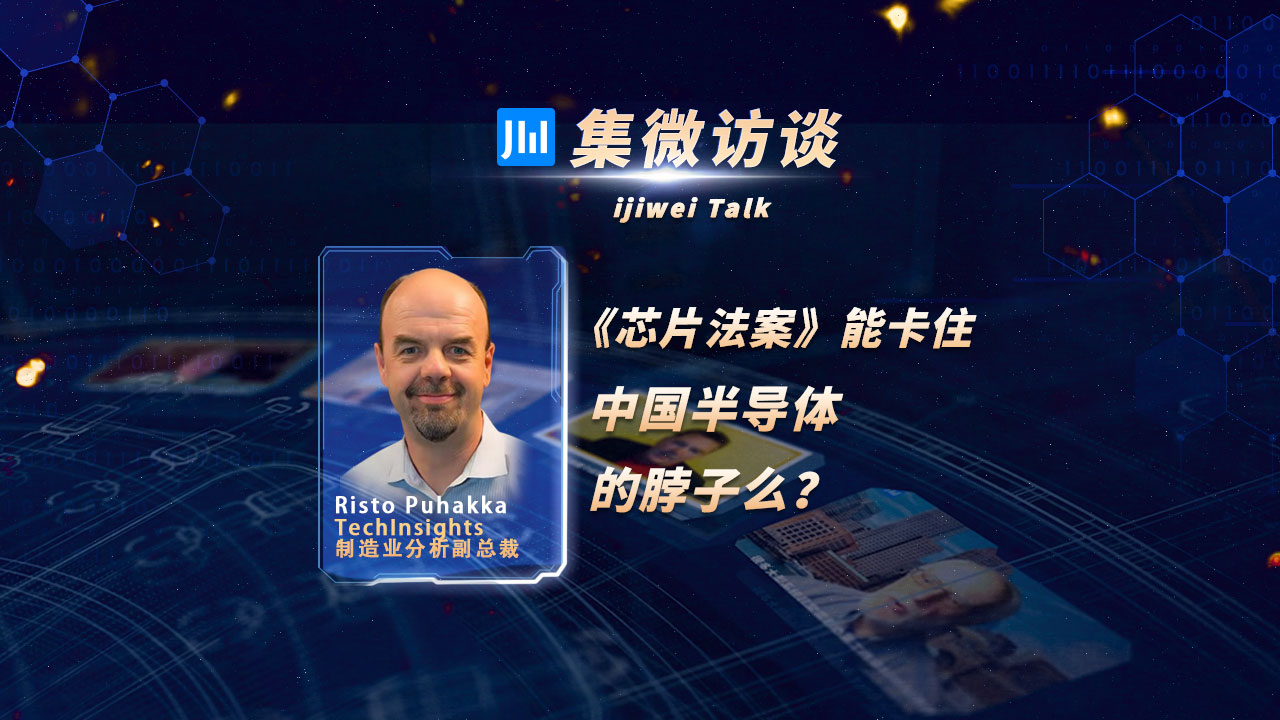
Risto Puhakka, vice president at the U.S. based TechInsights Manufacturing Analysis, commented on the impact of U.S. CHIPS Act on China’s semiconductor industry in a recent video interview with JW Insights. He says this act may be an obstacle in some areas but will stimulate China to gain share in specialty segments.
Risto Puhakka is an expert in semiconductor capital equipment markets as well as semiconductor manufacturing. Risto advises on semiconductor market trends and strategic industry statistics.
Following is the part of his video interview transcript.

Q: Reportedly, U.S. has issued new restriction on exporting 14nm and below chipmaking equipment to China. How would this new act impact the supply chain?
A: It's those things that are in place already that the U.S. equipment suppliers cannot supply the equipment to China and they are following those laws or export license practices that are in place. First of all, there is a substantial amount of equipment already in China. There is plenty of capacity which we believe is not fully utilized. The second thing is that we think that the Chinese companies are stepping up quite a bit on filling those gaps that are potentially there, especially in the process equipment like etch or deposition equipment. Replacing KLA with the process control is a lot more difficult, because it's a highly differentiated unique technology that KLA has. So those definitely will be a factor from that perspective. But in general, we believe that the Chinese companies will be filling in some of the gaps that are there already. And what we understand is they are already doing that.
Q: So do you mean in the long term, it will hurt American company's business?
A: It's not long term, it's short term. I mean there is already customer to buy in China and because of the legislation you cannot deliver. So it's not a long term, it's a short term. In the long term, you would probably see the Chinese companies have a bigger footprint in the global equipment markets, especially in the process equipment side, because we already see it to some extent. And then it’s just the question is how fast and how these Chinese companies can advance their technology.
Q: So China has a goal of 70% chip self-sufficiency by 2025. Would all the export restrictions from U.S. accelerate this process?
A: I mean that's probably unrealistic goal, but let's put this way that China has shown the willingness to invest accordingly to add that capacity, and we have seen the trajectory of China as a manufacturing base of chips gaining share. So the capacity share is growing, and the production share is growing. In certain ways, we don't think that will be changing because the challenge is really in advanced leading-edge technologies, which have very few companies capable of anyway, such as TSMC or Samsung or Intel. So those are the leaders in the technology. And it effectively looks right now that none of the world's companies can really match those three in the technology. So that won't change. But then for the specialty segments that we're definitely sure that China will continue to gain share and production. And that is likely to continue.
Q: U.S. is also putting more bans on EDA tool and other chip gears. How would Chinese EV development be affected?
A: I'm not super EDA expert myself, but the fundamentals of EV doesn't necessarily require super advanced technologies, because it's more about power and power management. Then certain features in a car maybe lacking that requires really advanced design and capabilities. In our view, it may limit, but it's also may not be a critical issue for continuing because at the end of the day, the cars and EVs are dependent on the battery technology. The investment is about battery technology rather than the latest and greatest semiconductor technology. So those maybe the factor there.
Q:Then how do you interpret bans on NAND flash memory manufacturing equipment?
A: Basically, for NAND memory, one of the critical systems for the manufacturing or NAND memory are etchers and the deposition tools, CVD tools, and some ALD tools.
Some of those tools are already supplied, not from U.S., but from Japan particularly. And the requirements for those tools are different compared to logic where you referred to 28 nanometer or 40 nanometer or 10 nanometer. So that may not be as effective as what's been going on the logic side.
Q: Since most of the tools were supplied by Japanese companies. Would there be a problem if Japan joined the Chip 4?
A:That would have an impact if Japan would join that.
RELATED
-
Local governments in China come up with policies to support AI development in 2023
11-17 19:12 -
NBS: China’s specialized equipment manufacturing industry for semiconductor devices sees 33.9% surge in value added in October
11-17 17:41 -
China's high-tech manufacturing loans see significant increase
11-14 17:08
READ MOST

No Data Yet~







